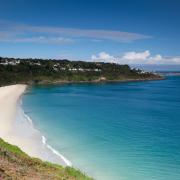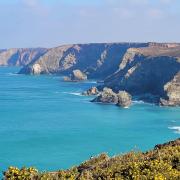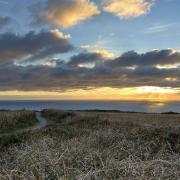Walking the South West Coast Path makes us feel good- ahead of Mental Health Awareness Week (18-24 May) we wanted to find out why. Lynne Wyness, academic and life coach tells us a bit more about the science behind it

According to the World Health Organization [SIC], poor mental health is one of the leading causes of disability worldwide. Low mood, anxiety, and stress seem an inevitable part of dealing with the demands and complexity of modern living. Or are they? Research reveals the natural world could hold the key to our mental wellbeing.
For around 300,000 years, humans were genetically programmed to thrive in green spaces, but with half of us now living in towns and cities, we haven’t had time to adapt to being disconnected from nature.
It wasn’t until the 1970s that psychologists proved we show an active preference for natural environments but, since then, evidence that green spaces are good for us has been stacking up. Research shows that people in hospital recover more quickly if they have a window with a view of nature, compared with those who look at a brick wall; our attention is restored by being in nature after staring at screens; physical activity outdoors gives us more energy and feelings of revitalisation than the equivalent indoors; and walking in the countryside significantly increases our sense of wellbeing and self-esteem.
The south west is gifted with some of the most beautiful countryside in England and the Cornwall yields a smorgasbord of nurturing green spaces to soothe our modern minds – fields, secret woodlands, open flower-speckled parkland and windy cliff tops. If something catches our eye – a fox crossing the path or morning daisies opening to the sun – we let our minds wander and feel better for it.

Anyone who has walked some of the 300 miles of coast path in Cornwall knows that it offers something even more alluring: a front-row vantage point to the ultimate blue space, the sea.
According to Nicholls who wrote Blue Mind (2010), we still know very little about how being in or near water affects our brains, but researchers are becoming very interested in the positive effects that water has on our mental health. Recent studies show living close to blue spaces improves our wellbeing, and walking near water improves general and mental health. Blue spaces are restorative spaces, where we find peace, rejuvenation, and space for contemplation away from daily stress. As neuroscience catches up, we’re sure to find out what we already instinctively know – our brains are happy when they find themselves near water.
Green and blue spaces, then, are good for us – physically, mentally, socially, and spiritually – and the South West Coast Path offers the perfect combination of both. Make a commitment to your mental health this spring and get out for a walk on the path, between the green and the blue. Your mind, body, and spirit will thank you.

Why do we love to be by the seaside?
For much of human history, according to French historian Alain Corbin, the coast was considered a necessary but dangerous place to be, awash with tales of shipwrecks and sea-monsters. But, in 1660, Dr Witte published a pamphlet Scarborough Spa, which claimed bathing and even drinking seawater could heal those suffering from ‘Hypochondriack Melancholy’. A social influencer of his time, Witte sparked the seaside revolution. Over the following 200 years, Georgians and Victorians flocked to partake in the restorative seawater or rest their troubled industrial bones on its shorelines. We have been obsessed with the coast ever since,
For more South West Coast Path adventures, visit Lynne’s blogthreewildsteps.com or follow her on Instagram @threewildsteps
This article first appeared in Cornwall Life May 2020 issue


























